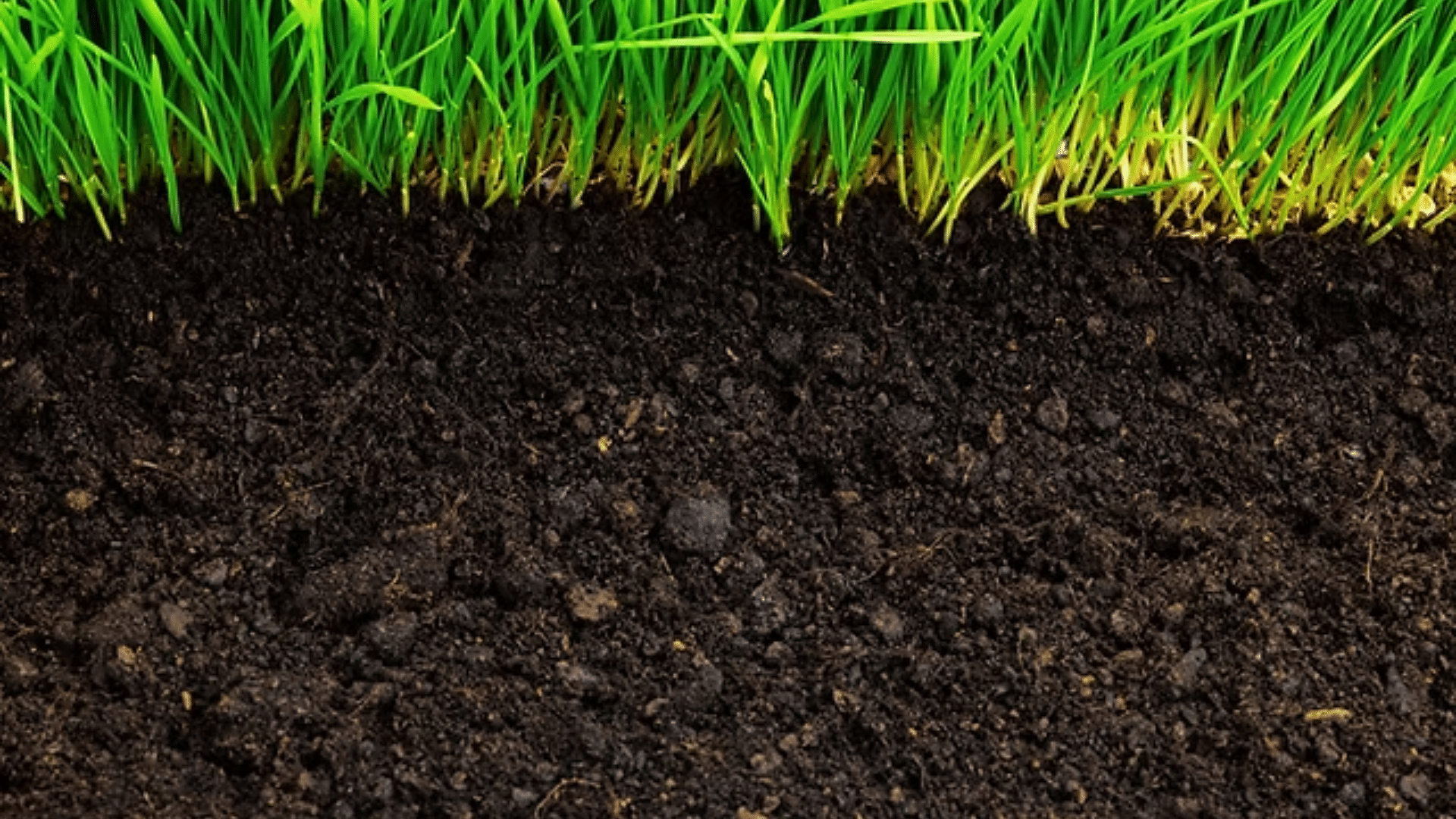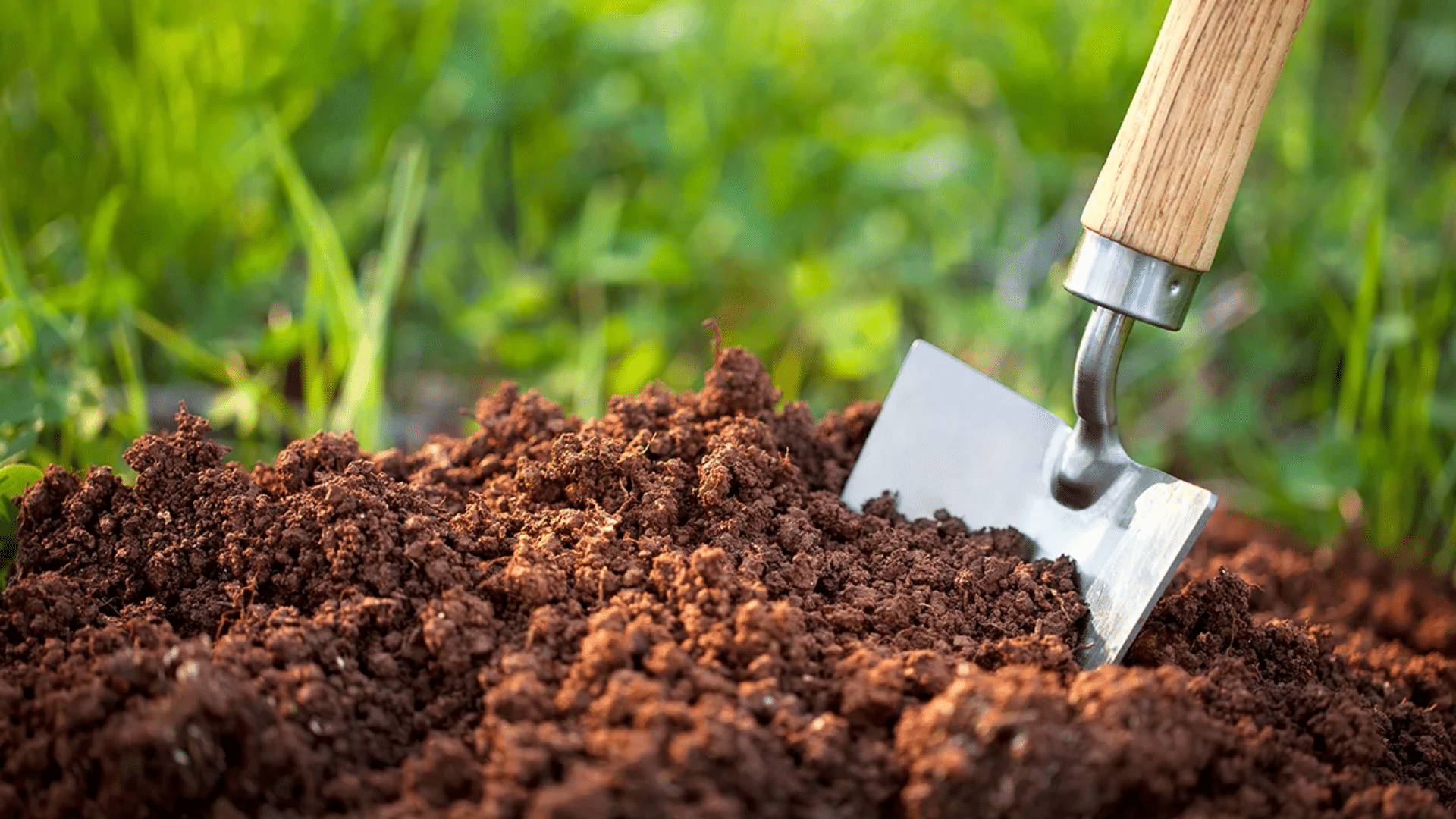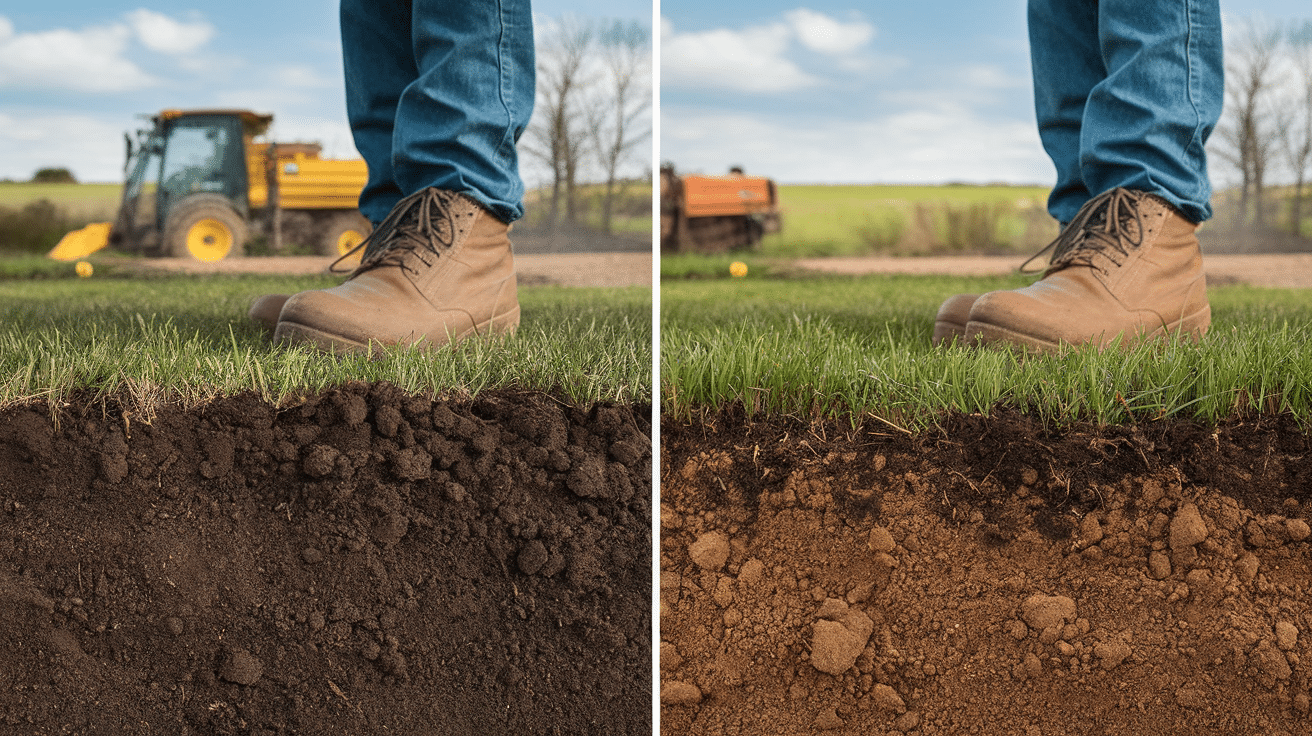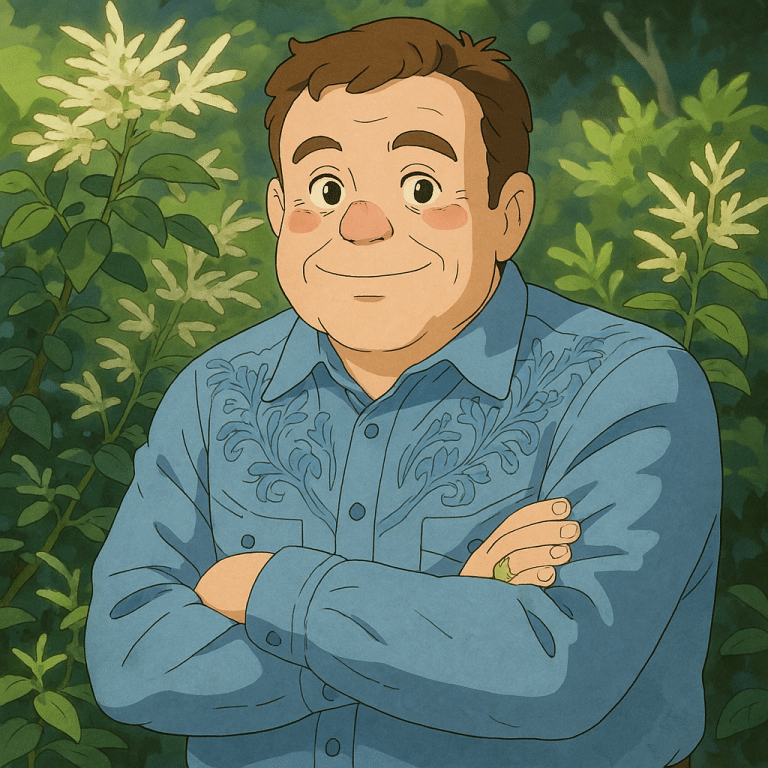If you’re planting grass and thinking about adding topsoil, you might wonder—will grass actually grow through it? The answer is yes, but it depends on how you use the topsoil.
Grass needs light, air, water, and contact with the soil to sprout and grow strong. If you cover grass seed with too much topsoil, it may struggle to grow. But if you do it the right way, topsoil can help your lawn grow greener and healthier.
In this blog, we’ll break it all down in simple steps. You’ll learn how much topsoil is safe to use, which type works best, and the common mistakes to avoid. Whether you’re starting from scratch or filling in patches, these tips will help you achieve the lush lawn you want.
Can Grass Grow Through Topsoil?

Topsoil is the top layer of soil that covers the ground, typically ranging from 2 to 8 inches in depth. It’s where most plants grow their roots and get nutrients.
This layer is rich in organic matter and tiny organisms that help plants grow strong and healthy. Good topsoil is soft, dark, and crumbly—it holds moisture but also drains well.
You can find it naturally in your yard or purchase it at garden centers, often mixed with compost or sand to enhance its suitability for planting.
Now, can grass grow through it? Yes, but only if you use it correctly. A thin layer of topsoil (about 1/4 inch or less) can help grass seed grow by keeping it moist and protected. But too much topsoil can block light and air, making it hard for grass to sprout.
Conditions for Grass to Grow Through Topsoil
For grass to grow through topsoil, a few simple conditions need to be just right.
- Thin topsoil layer: Grass seed can grow through topsoil, but only if the layer is about 1/4 inch thick. Anything deeper makes it harder for the sprouts to reach sunlight.
- Good seed-to-soil contact: Ensure the seeds make direct contact with the soil underneath. This helps them stay in place and get the nutrients they need.
- Moisture: Keep the soil damp, not soaking wet. Water often in light amounts, so the seeds don’t dry out.
- Light and air: Even though they’re under a thin layer of topsoil, seeds still need light and oxygen to grow.
With these conditions, your grass can grow strong and healthy, even through topsoil!
Benefits of Adding Topsoil to Your Lawn
Adding topsoil to your lawn has several great benefits. It helps improve the structure of your soil, making it easier for grass roots to grow deep and strong.
Topsoil also provides essential nutrients that promote healthy, vibrant growth. If your yard has low spots or uneven areas, a layer of topsoil can help level it out.
When planting new grass seed, topsoil holds moisture better and protects the seed, resulting in improved germination and thicker grass growth. Whether you’re patching up your lawn or starting fresh, topsoil provides a solid foundation for your lawn to grow on.
What Kind of Topsoil Works Best for Grass?

Choosing the right topsoil can significantly impact the growth of your grass.
- Go for loamy soil: Loam is the best mix of sand, silt, and clay. It holds water well but also drains easily, making it perfect for grass.
- Look for dark, crumbly soil: Good topsoil is rich in organic matter. It should feel soft and break apart easily in your hands.
- Avoid heavy clay or sandy soils: Clay can hold too much water, while sand dries out too fast. Both can make it hard for grass to grow.
- Check for added compost: Compost adds extra nutrients and helps seeds grow faster and stronger.
- Buy from a trusted garden center: Bagged topsoil or screened topsoil in bulk is usually better than cheap, unknown mixes.
With the right kind of topsoil, your grass will have a great place to grow and thrive!
When Should You Add Topsoil to Your Lawn?
Adding topsoil to your lawn can help improve the soil, fill in low spots, and give grass seed a better chance to grow. But timing matters! If you add topsoil at the right time, your grass will grow faster and stronger.
Early spring: This is a great time to add topsoil, especially if you’re planting new grass. The weather is mild, and the soil is warming up, which helps seeds sprout.
Early fall: Fall is another perfect season for topsoil and seeding. The soil is still warm, but the air is cooler, and there’s more rain to keep seeds moist.
After aerating: If your lawn is compacted, aerate it first. Then spread topsoil and grass seed to help the roots grow deeper.
Adding topsoil during these times sets your lawn up for healthy growth all year!
How Thick Can Topsoil Be Over Grass Seed?

When it comes to growing grass, less is more—especially with topsoil. If you’re spreading topsoil over grass seed, it’s important not to make the layer too thick. A thin layer, about 1/4 inch deep, is just right. This helps retain moisture, protects the seed, and still allows light and air to reach it.
If the topsoil layer is too thick—say, more than 1/2 inch thick—the grass seed may struggle to sprout. It might get smothered, receive insufficient sunlight, or remain too wet, which can lead to rotting. Remember, grass seeds are small and require close proximity to the surface to grow properly.
So, the key is to keep your topsoil layer thin and even. Use a rake to gently spread the seed out and let it work its way up. With just the right depth, your grass will grow strong and green!
Common Mistakes to Avoid When Using Topsoil
Using topsoil correctly can help your grass grow strong and healthy. But if you’re not careful, a few simple mistakes can slow things down or even ruin your hard work. Here are some common things to watch out for:
- Adding too much topsoil: A thick layer can smother the grass seed. Stick to about 1/4 inch so light and air can still reach the seeds.
- Using poor-quality topsoil: Cheap or untested soil may contain weeds, pests, or insufficient nutrients. Always choose clean, screened, and healthy topsoil.
- Skipping seed-to-soil contact: If the seeds don’t touch the soil underneath, they may not root well. Rake lightly so seeds settle into the soil before covering.
- Letting the soil dry out: Grass seeds need steady moisture. Keep the topsoil damp (but not soggy) until the grass sprouts and starts to grow.
Avoiding these mistakes gives your grass the best chance to grow through the topsoil and thrive!
Conclusion
Adding topsoil to your lawn is a simple step that can make a big difference. It helps grass grow thicker, stronger, and healthier by giving seeds the nutrients and moisture they need. Whether you’re filling in bare spots, leveling your yard, or starting fresh, using the right kind of topsoil at the right time sets your lawn up for success.
Just remember to keep the layer thin—around 1/4 inch—and make sure your grass seed has good contact with the soil underneath. Water regularly, avoid common mistakes, and be patient. Grass takes time to grow, but with the right care, you’ll see fresh green sprouts popping through the topsoil before you know it.
So if you’re wondering whether grass will grow through topsoil, the answer is yes, as long as you do it right. Happy planting and enjoy your lush lawn!













